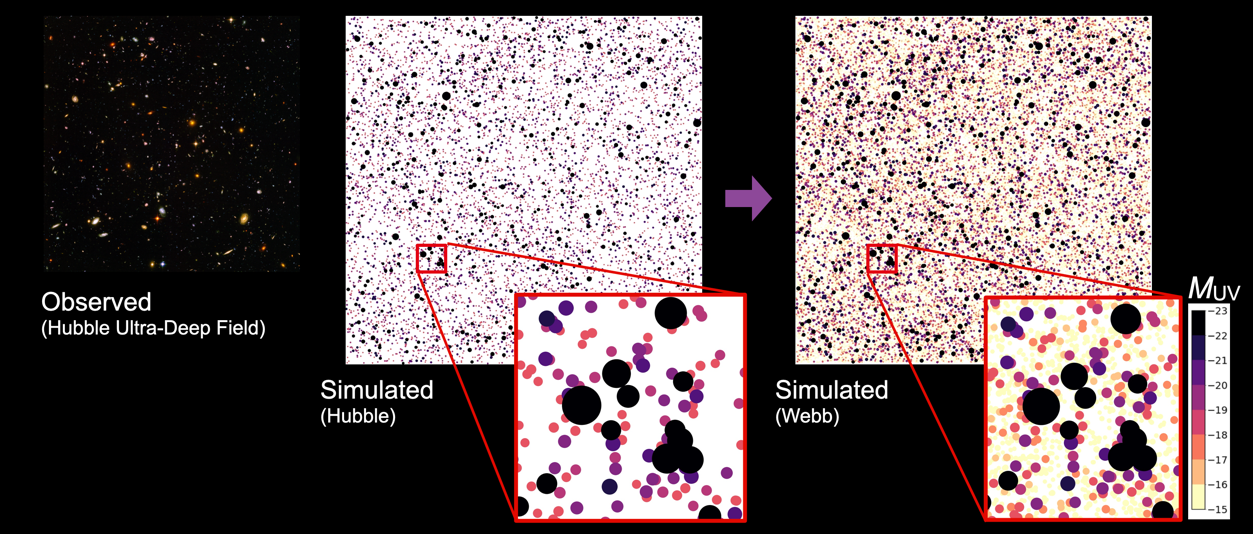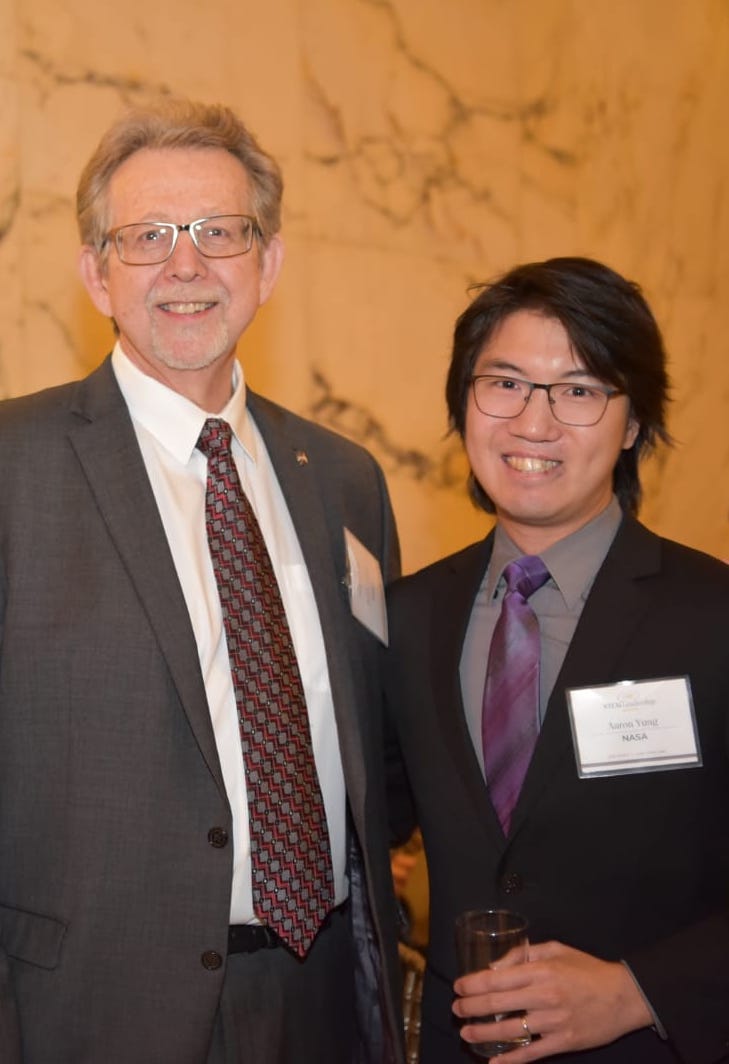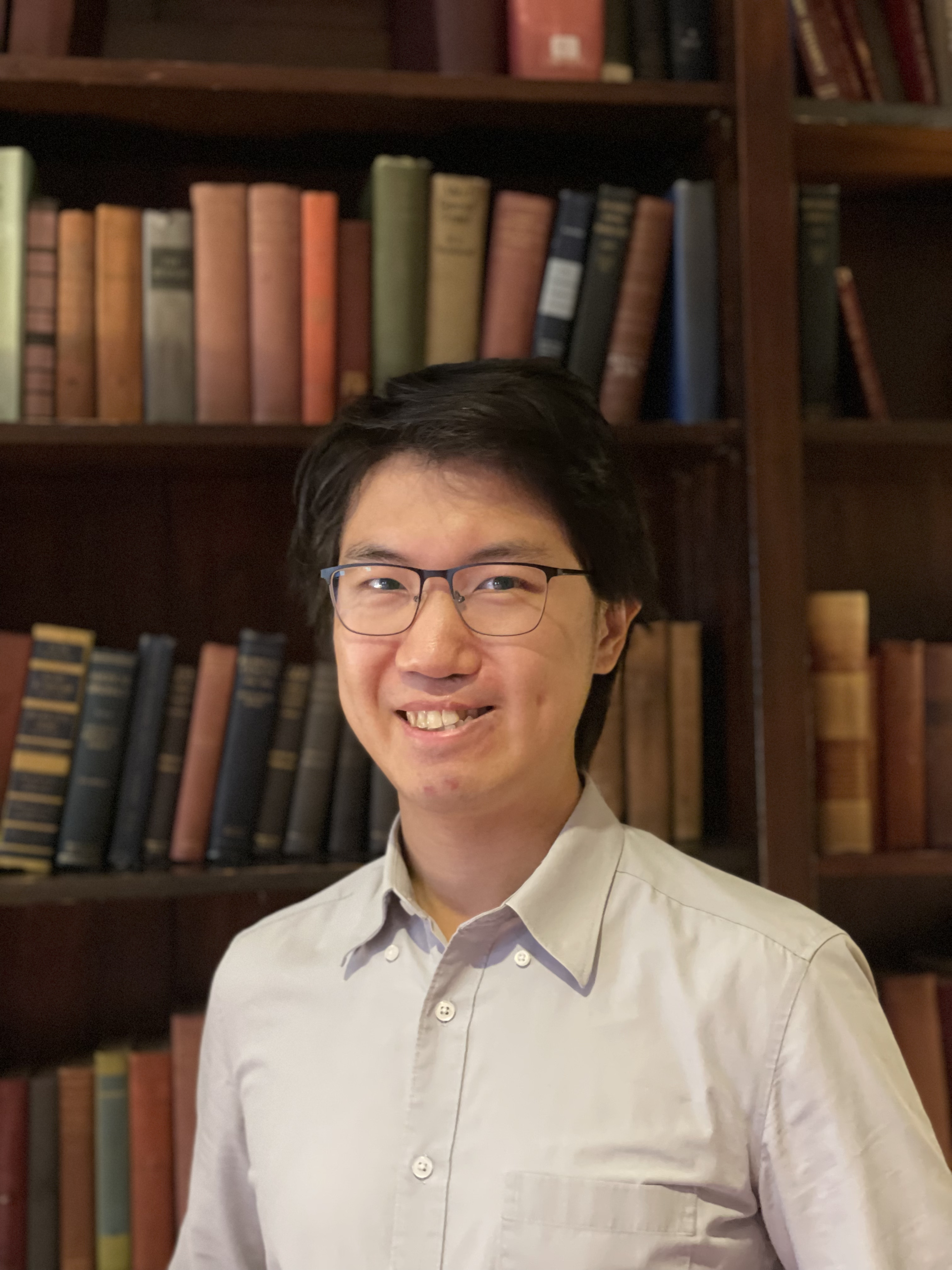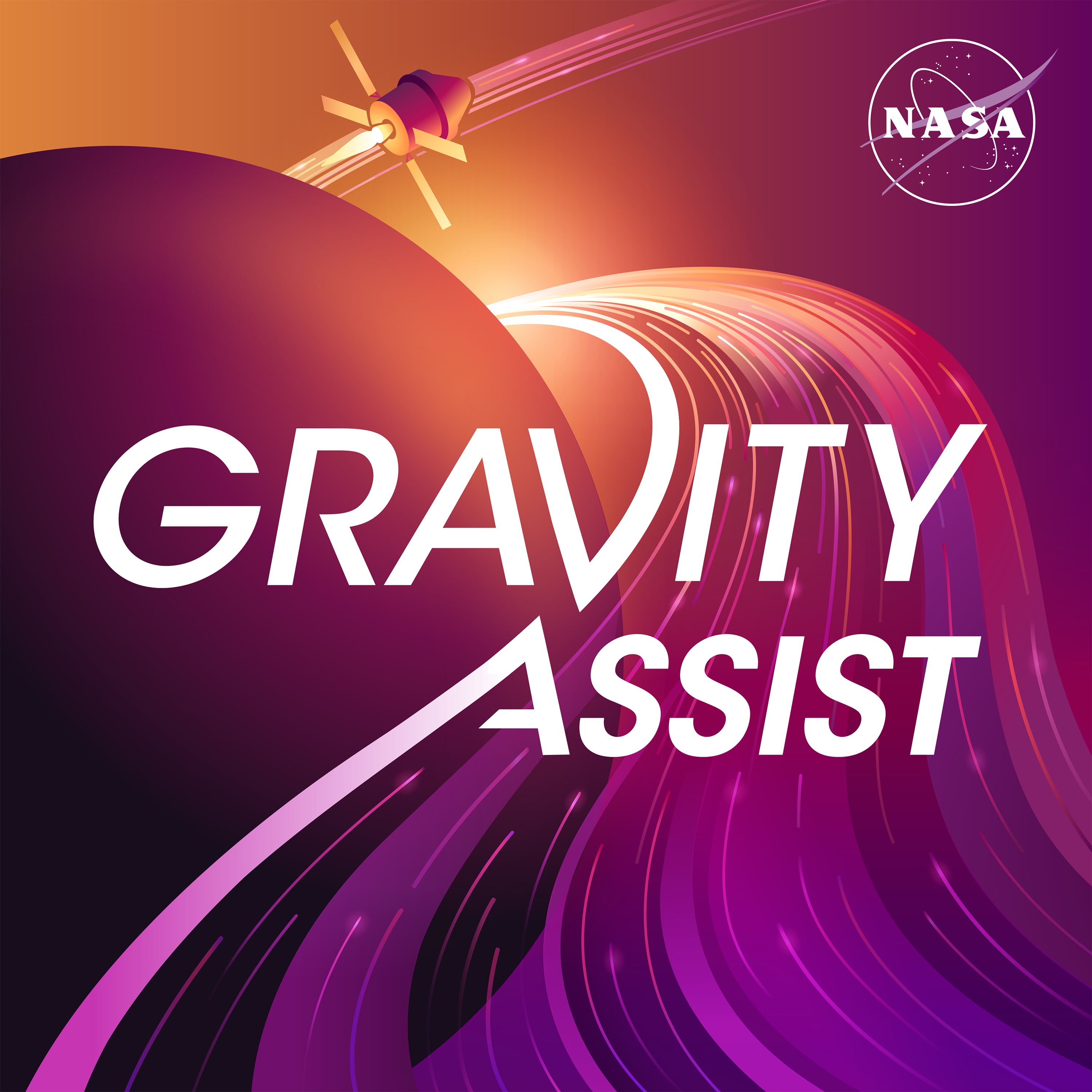
The James Webb Space Telescope, which launched Dec. 25, will allow us to see the farthest galaxies and better understand the origins of the Milky Way. Aaron Yung at NASA’s Goddard Space Flight Center is preparing for these historic observations by simulating what Webb will see in the early universe. But Aaron’s path to mind-bending research wasn’t easy. When he came to the United States as a teenager, he spoke a different native language and didn’t have the preparation other kids had for math and physics. Learn about Aaron’s journey in this episode of Gravity Assist.
Jim Green: Our new James Webb Space Telescope is a time machine, observing the early stars and gas that make up the early universe.
Aaron Yung:By looking at galaxies from far away to nearby, we can put together the universe’s evolution history.
Jim Green: Hi, I’m Jim Green. And this Gravity Assist, NASA’s interplanetary talk show. We’re going to explore the inside workings of NASA and meet fascinating people who make space missions happen.
Jim Green:I’m here with Dr. Aaron Yung, and he is a NASA postdoctoral fellow at Goddard Space Flight Center in Greenbelt, Maryland. Aaron has been working on a variety of projects related to how the James Webb Space Telescope will study the early universe. James Webb is of course, our most powerful infrared space telescope we’ve ever launched. It will start groundbreaking science later this year with its first observations coming up. So welcome, Aaron, to Gravity Assist.
Aaron Yung:Thank you for having me, Jim.
Jim Green:Well, I’m just delighted to talk to you because James Webb has such a spectacular telescope. And as we talk, they’re going through their calibration and aligning the mirrors. And I can’t wait for those first observations. So how did you get involved with NASA and the Webb telescope?
Aaron Yung:So my background is actually in theoretical astrophysics. And I specialize in modeling galaxy formation. So my work is all about understanding the physics that drives the formation and evolution of galaxies, especially the ones that form in the very early universe, and the way they evolved and interact with the cosmos. So these studies are the key to answering big open questions like how the universe work[s], and how did we get here. You can see that these questions align very well with the mission of the James Webb Space Telescope. So in anticipation of our next great observatory, I did a dissertation on making predictions for galaxies in the early universe, which JWST will help us see for the first time, and I call this work semi-analytic forecasts for JWST. I use theoretical models to predict what JWST will see in galaxy surveys. And this simulated data helps optimize the way we look for galaxies.
Aaron Yung:It also helps interpret and understand the galaxies we see. So right after I received my Ph.D. from Rutgers University in 2020, I joined Goddard Space Flight Center as a JWST fellow through the NASA postdoctoral program. And the position allows me to continue working with observing teams, which I provide theory support for future JWST observations. And I also get to continue my work on creating forecasts for other flagship telescopes.
Jim Green:That’s fantastic. So that early work you did in your thesis is really what got you the attention of NASA. And then, you know, we just had to have you on the team.
Jim Green:But why do we care about the early galaxy formations?
Aaron Yung:So before we talk about early galaxies, we need to talk about the time machine aspect of JWST. You see, because light travels at a finite speed. So we have light from different parts of the universe constantly streaming to us, since this light carries information about the universe at the time it was emitted. So the longer the light has traveled, the older the information is, and is therefore showing us what the universe was like further back in time. So by looking at galaxies from far away to nearby, we can put together the universe’s evolution history.

Aaron Yung:So now why do we care? Because in addition to living on the planet, and in a solar system, we also live inside a very big galaxy. And naturally, we are curious about its history. Current theory says that galaxy formed hierarchically, starting with the small ones, and then later [they] grow bigger through mergers and accretion. And we think our Milky Way galaxy went through the same process. So these first galaxies that JWST will see, are not the progenitor of our own Milky Way. But looking at these galaxies, we can get a sense of what universe was like in the past. And that will give us clues about what our Milky Way galaxy has undergone in the past.
Jim Green:So Aaron, based on what we think we know, there’s a start of the universe called the big bang. And then after that, what happens?
Aaron Yung:So by measuring how fast the universe expands, we think the Big Bang happened about 13.8 billion years ago. And that was the beginning of the universe’s timeline. So after that the universe [has] undergone some violent expansion, and then the content of the universe gradually cooled. And then at some point, baryonic matter can exist.
Aaron Yung: So this baryonic matters are the things that made up of stars and galaxies and you and me. So after these baryonic matter forms, they will have to gradually coagulate under the effects of gravity. And then we experienced a phase of the universe that we call the dark age. So galaxies kind of formed, but we can’t really see them because they’re obscured or blocked by neutral gas. But over time, when galaxies start to pump out radiations to the universe, to the intergalactic medium, so space between galaxies, the universe gradually become[s] ionized, or, in other words become[s] transparent. So light can travel freely through the universe, and now we can see the universe clearly.
Jim Green:Okay, so after the Big Bang, we get a time period where matter starts forming into stars, and then stars and dust and galaxies are formed from that. And, of course, what happens later, our solar systems are made around stars. In fact, our solar system is only 4.6 billion years old. So this big bang happened a long time ago.
Jim Green:Well, how do we define a galaxy? Is it made up of a certain number of stars? Is there a limit?
Aaron Yung:So galaxies are actually more than stars. There’s also gas in there, multi-phase gas, hot and cold and ionized. And also they interact with their own dark matter halo. And when galaxies form in a cluster, they also interact with their neighbors. So there are all sorts of things going on, and there’s not really a limit on how many stars there need to be to become a galaxy.
Jim Green:Well, what do we think these are early galaxies look like? Do they start out being spiral galaxies right away?
Aaron Yung:Spoiler alert there, we’re waiting for the JWST images. So something we know for sure is that they are going to be really red. And they are also likely to be irregular in shape, because spiral galaxies take several mergers to merge, and they’re usually bigger. But these early galaxies, they’re so red, and we are going to see them in infrared, because you see, we expect these galaxies to emit a lot of ultraviolet light. But because this light traveled a long way to get to us, and along its long journey, the light wave has been stretched so much that it becomes infrared. And Webb is designed specifically to detect light in this regime. And we also expect these galaxies to be smaller than the ones we saw in a nearby Universe. Because there was so little time has elapsed after the Big Bang, they don’t really have a lot of time to evolve, to grow mass yet. But they’re also expected to be brighter than the nearby galaxies of similar mass, because they’re full of young stars and young stellar populations are expected to be significantly brighter than older populations.
Jim Green:So those young stars, do they get really massive and, and do we see stars today that big? Or are they something special to behold?
Aaron Yung:They are likely to be even more massive than the stars we have today because when the universe starts off, there isn’t really a lot of heavy elements. So we expected these stars formed out of gas that are pristine from the Big Bang, and because they don’t really have metal in them. So the gas[es] are cooling very inefficiently. And that will lead to the formation of bigger stars. So they tend to be brighter, but they also burn up their fuel faster. And that plays a role into why the younger stellar populations is brighter, because they contain more of this massive but short-lived stars. And when the stellar population grow old, these young star[s] star to die out. And the older, longer lasting stars are intrinsically less bright. And that’s why.
Jim Green:Ah, so that’s why we want to go back in time and look at these early galaxies, because the primary stars that make them up are so different than the kind of stars that we have today, particularly the typical ones. So this is really an exciting opportunity for us to really tease out that early phase of the evolution of the solar system and our stars and other galaxies. Well, what are the features of the Webb observatory that really allow you to study this early universe?
Aaron Yung:So there’s so many things that went into the design of JWST that makes it the greatest of all time for studying the early universe. And here, let me just highlight a few.
Aaron Yung:First, JWST’s iconic primary mirror is extremely large. It is 6.5 meters across, and its area is nearly seven times bigger than Hubble. The large mirror will help collect more light and give us a chance to detect the sources that are extremely distant and faint. And since Webb will observe the universe, in infrared, the mirror is coated with a thin layer of gold, which is the best material for reflecting infrared. And since everything with the temperature glows in infrared, it is important to keep the telescope’s optical components and scientific instruments cool, like really, really cool.
Aaron Yung:So instead of orbiting Earth like Hubble does, Webb is at an orbit 1 million miles away from us, and to keep it cool from the Sun’s radiation, Webb is also equipped with a sunshield that is the size of a tennis court. And that will keep Webb at its operating temperature of 50 Kelvin, or negative 370 degrees Fahrenheit. And the mid-infrared instrument has its own cryogenic cooler that cools it even further to below 6 Kelvin, or negative 449 degree[s] Fahrenheit.
Aaron Yung:So both the big mirror and the low operating temperature are required for the extremely sensitive scientific instruments to operate. These instruments will process the light that reaches us and turn them into images or spectra, and through them, we will be able to see the early universe.
Jim Green:Well, you know, Aaron, a lot of people know a lot about the Hubble Space Telescope. And now we have the JWST telescope almost operational. What’s going to be the major differences that we will have from the observations that these two spacecraft make?
Aaron Yung:So one that JWST is going to be 100 times more sensitive than Hubble. So it will be able to detect galaxies that are fainter than what Hubble can see. And that will show us galaxies are also further out, forming at even earlier times. So that is very exciting. And additionally, JWST also has additional mid-infrared capability that Hubble doesn’t have. So that will help us see other things like stars behind the cloud of dust, or AGN that are obscured by its host galaxies.
Jim Green:Aaron, do the early galaxies have black holes? Or are they formed later?
Aaron Yung:Indeed, we think there will be black holes in them. So the current theory is that there could be some supermassive black hole seeds that are left behind by the very first stars. So these black hole seeds will sit there quietly as the galaxy forms. So they might not have a strong effect on the galaxies. But over time when they grow in mass, and they start accreting, they can indeed affect their host galaxies. So besides supporting JWST observations, I’m also the PI of a JWST cycle I theory program, which I will be developing a theoretical framework to explore the symbiotic relation between the early forming black holes and their host galaxies. So when a black hole accrete[s] matter rapidly, you can have strong impact on their host galaxies in many ways. However, the black holes themselves are probably obscured by their host galaxies. So even with JWST, we might not be able to see them directly. So my theoretical framework will tie this early forming black holes to the properties of their host galaxies, and suggests ways that we can probe them indirectly through signals that are observable by JWST.

Jim Green:Yeah, that’s fantastic. What do you expect, then, to see, to verify your simulations? Will that come in one image or a series of images or are all the images have to be put together before you see the early universe?
Aaron Yung:So that will have to wait until the exciting JWST program to happen. So it’s unlikely to be one single image, but it’s probably a mosaic of images that we get from a large JWST survey.
Aaron Yung:We already have several programs that are planned to do deep galaxy surveys within the first year of operation.
Jim Green:Well, what is Webb doing right now? What’s been going on since it was launched?
Aaron Yung:Right. Since the big launch a little under two months ago, JWST has undergone a series of delicate steps to unfold itself. So remember that gigantic mirror and sunshield that I mentioned, the whole telescope is so big that it must be folded up to fit inside the rocket that launches it to space. In the first two weeks of its journey, we saw successful deployment of everything. So big kudos to all the engineers who design and build the telescope.
Aaron Yung:JWST was then successfully inserted into his target orbits the second Lagrangian point, and would go through a six month long commissioning process. So right now, the team at the JWST Mission Control Center in Maryland, is working on aligning the 18 segments of the primary mirror. At [the] start, each segment is kind of doing its own thing. And the goal is to make all of the segments work coherently as one giant mirror. So right now, Webb is looking at a bright star, but 18 different bright dots show up in the detector. The team needs to first identify which dot corresponds to which segment, and then the mirror segments will need to be moved and individually adjusted. And at the end, they will move the mirror once again to stack the 18 images to make all the segment[s] work as one. So we got to be patient.
Jim Green:Well, did you always want to be a scientist?
Aaron Yung: Well, the answer is a bit, a yes and no. I always have a thing for physics, but never had the confidence to make it my career. I remember when I was little at an age when I was still building towers and bridges with wooden blocks, I became aware of the invisible rules that all my toys seem to follow, you know, the way things fall, the way certain things bounce after falling, or colliding, or the trajectory of [a] baseball, that sort of thing. I was really curious about the kinds of rules that are sort of behind the scenes. And to see if I got them right, I actually emulate[d] things in my head, like imagine a tower blocks, and you give it a little push in your head and you can, you can use your imagination to follow the cascade of the blocks. And that was really fantastic for a kid who had to wait to see the doctor all the time.
Aaron Yung:And I, I wanted to learn more. So later I learned that these rules are called physics. And it wasn’t the English word physics, but the Chinese phrase for physics, which is made up of two words: matter and logic. So together, they spell “making sense of things.” And that idea kind of stuck with me.
Aaron Yung:So fast forward a decade, I immigrated to the United States with my family when I was 15. And I grew up in Hawaii. So that was fun. But at the beginning, it was pretty rough, because I had to catch up with the language. I started high school in the last month of ninth grade. So I practically missed a whole year of high school. And I needed to catch up with the credits. So I was catching up so hard that I took extra classes before school, after school, online and over the summer. I graduated high school a whole year earlier. But I didn’t have a chance to take any advanced physics and math classes. So I wasn’t prepared to take physics. And I actually started college as a finance major. But a year later, I decided to switch majors to physics. I went back to tell my high school physics teacher about it. And she wasn’t exactly encouraging. Well, maybe she knew I wasn’t prepared for that.
Aaron Yung:Everyone told me physics is hard, and you need to be really good at math to get in. And that’s why I never had the confidence to even consider doing it for my career. And to be fair, I say that sort of things too, sometimes. So maybe there is some truth to it. But would I add a little twist to it. Instead of saying that, I should say, “If you do physics, you will need a lot of math. But no matter where you are at now, you will need to work your hardest, and get used to learning things on the fly. So as long as you have the strength to persevere, you will be fine.”
Jim Green:Yeah, that’s really a good philosophy. You know, and I have a little modification, if I may, that I say in the same way you do. And that is all math is not created equal. I really enjoyed various types of math, but not everything. For instance, I was horrible in geometry. But I did not let that stop me going on, completing a variety of math and physics courses. So indeed, it’s really about determination, and being able to enjoy what you’re doing.
Jim Green:Well, Aaron, I always like to ask my guests to tell me what was that event or person place or thing that got them so excited about being a scientist that they are today? I call that event a gravity assist. So Aaron, what was your gravity assist?
Aaron Yung:So like the Voyager missions, I actually had several and I will limit myself to just three. So the first gravity assist that changed my life trajectory happened in my undergrad. At first I wanted to do research in mathematical physics, but I was turned down by the person who I wanted to work with. And the astronomy professor next door took me in, her name is Aparna Venkatesan. She talked me into her research group and brought astronomy in to my life. So as an undergrad working with her, I also got to observe at the Arecibo Observatory at Puerto Rico, which was my first experience working with a big telescope. So the next one I had. And also, the biggest one I had so far is from my thesis advisor, Rachel Somerville, her life research launched in my whole career and gave me the necessary acceleration towards working on theoretical astrophysics and working with JWST.
Aaron Yung:And finally, NASA, the one that I’m experiencing right now, NASA took me in at a time when the field was still quite uncertain about when JWST would be launched. So joining NASA and having direct access to the people that work closely with JWST, and the Roman Space Telescope is really setting me up to continue developing all the work, I have started and get inspired to take this work to new directions. And here is a bonus one. Since I joined NASA during the early phase of the pandemic, I’ve spent most of my time working remotely. And that took a toll on experience working as a part of the agency. So the silver lining is that we’re spending more time online. And I ran into you, Jim. So, Jim and I met through social media about a year ago. And since then, we have been working together on two weekly shows that we engage with a live public audience. And we talk about literally everything on astronomy and space exploration. So I obviously enjoyed my front row seat to all your exciting stories on Mars exploration, planetary science, and countless NASA missions and histories. But I also feel incredibly privileged working with you in this capacity. So thank you for all the science communication training, and being my role model for making science accessible.
Jim Green:Well, that was really kind of you to say Aaron, and and I have to say, I’ve really enjoyed working with you, when we get together and talk on Clubhouse. Indeed, it’s it’s wonderful to have many different people from many different walks of life, around the world, sitting in listening to us talk about science, and then allowing them to ask us some really great and penetrating questions. So Aaron, thanks so much for joining me on Gravity Assist in talking about the fantastic things that you’re doing, modeling all those early galaxies, waiting for JWST data to come in.
Aaron Yung:Thank you, Jim.
Jim Green:Well join me next time as we continue our journey to look under the hood at NASA and see how we do what we do. I’m Jim Green, and this is your Gravity Assist.
Credits
Lead producer: Elizabeth Landau
Audio engineer: Manny Cooper



























